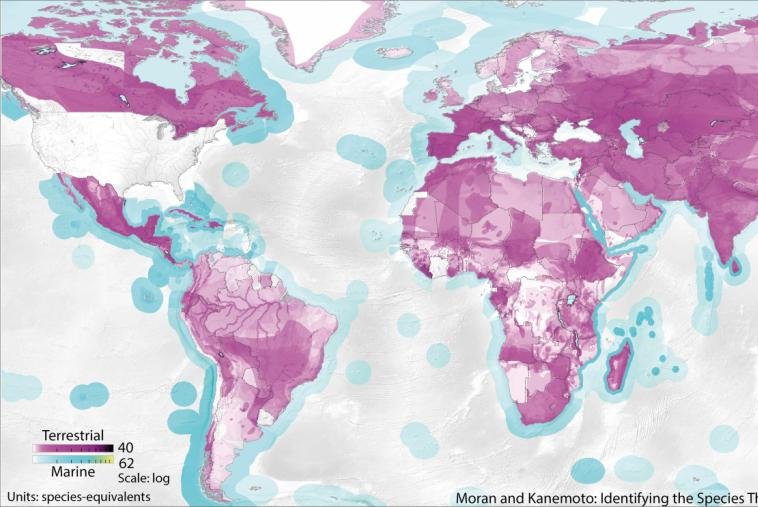Scientists created a map of the species threat hot spots caused by consumption habits in the United States. Photo by Daniel Moran and Keiichiro Kanemoto
TRONDHEIM, Norway, Jan. 4 (UPI) -- A new map shows how U.S. consumption affects endangered species around the globe.
A pair of researchers from Norway and Japan calculated the percentage of threat to a vulnerable or endangered species caused by U.S. consumption of goods produced in the species' native country. Their calculations yielded threat hot spots.
U.S. consumption produces threat hot spots in Southeast Asia, Central Asia, Madagascar, southern Europe, the Sahel, southern Mexico, Central America and southern Canada.
The analytical process can be used to generate a map for consumption in any country in the world.
"Connecting observations of environmental problems to economic activity, that is the innovation here,"
Daniel Moran from the Norwegian University of Science and Technology said in a news release. "Once you connect the environmental impact to a supply chain, then many people along the supply chain, not only producers, can participate in cleaning up that supply chain."
In Europe, regulators have worked to curtail the importation and consumption of products that directly threaten rainforests in Indonesia. The new map offers the opportunity to go further -- to focus on hot spots, instead of only specific products.
"[The EU] could decide to adjust their research programmes or environmental priorities to focus on certain hotspots in Southeast Asia," Moran said. "Companies could also use these maps to find out where their environmental impact hotspots are, and make changes."
Moran and his colleague Keiichiro Kanemoto, from Shinshu University, published their research in the journal Nature Ecology & Evolution.















